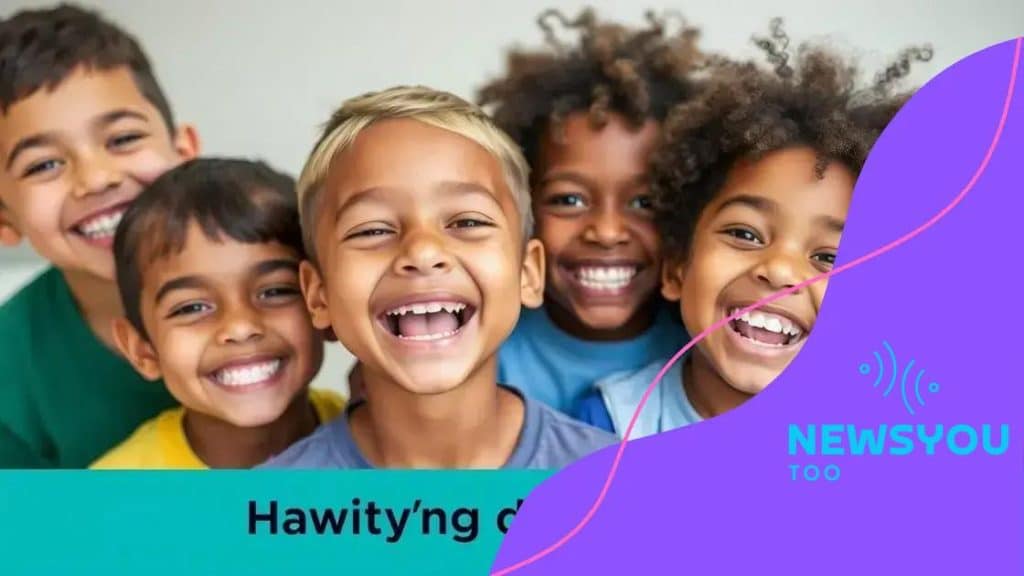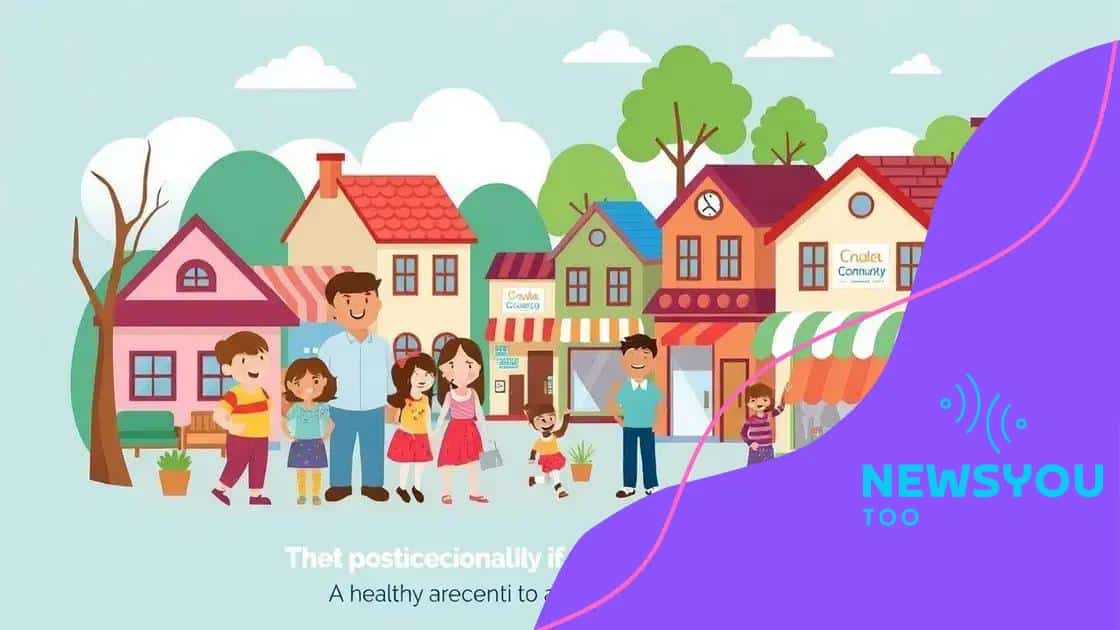The benefits of free dental care for low-income families

Anúncios
The benefits of free dental care for low-income families include improved oral health, boosted confidence, enhanced social interactions, and better overall quality of life for children.
The benefits of free dental care for low-income families are profound, influencing everything from health to self-esteem. Have you ever considered how a simple dental visit can change a child’s life? In this article, we’ll unpack those important benefits and more.
Anúncios
Understanding free dental care programs
Understanding free dental care programs can be essential for families seeking dental health services without the burden of high costs. These programs are designed to ensure that all individuals, regardless of income, have access to necessary dental care. They serve as a vital resource for low-income families, providing preventive and restorative services.
These programs may vary by region, but they generally include basic services such as cleanings, examinations, fillings, and extractions. Knowing what services are available can help families make informed decisions about their dental care.
Types of Free Dental Care Programs
Several types of programs exist to provide free dental care. Each program has unique benefits and eligibility requirements. Here are some common types:
Anúncios
- Community Health Clinics
- Dental Schools and Training Programs
- Non-Profit Organizations
- State-Funded Programs
Community health clinics often offer sliding scale fees based on income, ensuring that care is affordable for everyone. Meanwhile, dental schools may provide treatment from students under the supervision of licensed dentists, allowing people to receive quality care at reduced costs.
Non-profit organizations also play a crucial role by organizing dental events in various communities. These events often feature volunteer dentists who provide services to underserved populations. State-funded programs may offer additional support to low-income families, making sure dental health is prioritized in their localities.
Eligibility Requirements
Eligibility criteria for free dental care programs can differ. Typically, these might include:
- Income level
- Residency status
- Employment status
- Family size
Understanding these requirements can be crucial for families hoping to access these programs. It’s important to research local resources and gather necessary documentation before applying.
Furthermore, many programs also offer educational resources to help families maintain oral health. These resources can empower individuals by teaching them about proper dental hygiene practices, nutrition related to dental health, and when to seek professional help.
Utilizing free dental care programs can greatly improve health outcomes for those in need. Not only does this enhance accessibility to dental services, but it also builds healthier communities.
How free dental care affects children’s health
How free dental care affects children’s health is a critical topic for families seeking to improve their children’s well-being. Access to dental services plays a huge role in both physical and emotional development. When children receive regular dental check-ups and treatments, it helps prevent serious health issues.
Regular dental care is essential for maintaining good oral hygiene. This can lead to a reduced risk of cavities and gum disease, which are common issues in children. Early intervention is key; addressing dental problems as they arise prevents complications later.
Impact on Physical Health
Studies show that children with access to free dental care experience better overall health outcomes. They are less likely to suffer from:
- Tooth decay
- Infections
- Misalignment problems
- Nutritional deficiencies
When children have healthy teeth, they can eat a balanced diet, promoting better growth and development. On the other hand, untreated dental issues can lead to pain and difficulty eating, which may affect their nutrition.
Proper dental care also plays a significant role in preventing chronic illnesses. Research indicates a connection between oral health and conditions such as diabetes and heart disease later in life. Ensuring access to free dental programs can help set children on the path to a healthier future.
Emotional and Social Effects
Beyond physical health, free dental care positively influences children’s emotional and social well-being. Kids with good oral health tend to have higher self-esteem and confidence. They feel more comfortable interacting with their peers and participating in social activities.
On the contrary, dental issues can lead to embarrassment, impacting their social interactions. Children with visible dental problems may avoid smiling or engaging with others, which can harm their mental and emotional development. Programs that provide free care help alleviate these challenges, allowing children to thrive socially.
Access to free dental care is not just about treatments; it’s about building healthier, happier futures for children. When families recognize the importance of dental health, they create a strong foundation for their children’s lifelong well-being.
The economic impact of dental care access

The economic impact of dental care access is profound, influencing both individuals and communities. When families have access to affordable dental services, it can lead to significant financial benefits. Children who receive regular dental care often avoid more severe health issues that require costly treatments in the future.
Investing in dental care access not only improves health outcomes but also boosts the economy as a whole. Healthy individuals are more likely to participate in the workforce. They tend to miss fewer days of work due to dental pain or related illnesses. On average, dental problems can lead to over $100 billion in lost productivity each year in the United States alone.
Benefits to Families
When families access free dental care, they experience several financial advantages:
- Lower healthcare costs
- Fewer emergency visits
- Enhanced job stability
- Improved quality of life
By maintaining oral health, families can significantly reduce their overall healthcare spending. Preventative care helps catch issues early, meaning fewer high-cost emergency interventions are needed. This allows families to allocate resources to other essential areas such as education and housing.
Moreover, when parents maintain their own oral health, they set a positive example for their children, creating a cycle of health consciousness that benefits future generations.
Community Economic Growth
Access to dental care also fosters community economic growth. Healthy individuals contribute to a thriving workforce, leading to:
- Greater local spending
- Increased business productivity
- Attraction of new businesses
- Lower unemployment rates
When communities invest in dental health programs, they lay the groundwork for economic advancements. As people become healthier, they contribute to local economies by purchasing goods and services, which stimulates local businesses.
Furthermore, communities with high health standards often attract new businesses. Companies seek to establish themselves in areas where the workforce is healthy and capable, boosting local job opportunities.
In summary, the economic impact of dental care access extends far beyond individual health. It shapes families and communities, promoting not only health but also socioeconomic stability and growth.
Barriers to accessing free dental services
There are several barriers to accessing free dental services that many low-income families face. Understanding these challenges is essential for improving access to care. Despite the availability of free programs, not everyone can benefit from them due to various obstacles.
One of the primary barriers is a lack of awareness about available services. Many families do not know that free dental care exists or how to find these resources. This can prevent them from seeking help when needed.
Geographic Limitations
Geographic limitations also play a significant role. In some areas, there may be few or no dental care facilities that offer free services. Rural communities often struggle with access issues as they may be far from available clinics. Even when clinics exist, limited transportation can hinder families from getting there.
Additionally, timing is critical. Many clinics operate on restricted hours, making it challenging for working parents to find time for appointments. Coordinating dental visits with work and school schedules can add stress to families already facing financial challenges.
Language and Cultural Barriers
Language differences can make it difficult for non-English speakers to access dental care. Lack of translation services at clinics can create misunderstandings about procedures and availability. Cultural attitudes towards dental care also vary, and some families may be hesitant to seek treatment due to fear or stigma.
Moreover, there is often a perception that free services might compromise the quality of care. Families may worry that providers in free clinics are less qualified or that they will not receive the same standard of treatment as they would in a private practice.
Financial and Administrative Barriers
Even in free programs, there can be hidden costs. Some clinics may charge small fees that can still be burdensome for low-income families. Additionally, confusing paperwork and eligibility requirements can deter families from applying for services.
Building trust is crucial for overcoming these barriers. Community outreach programs that engage families and provide clear information can help bridge these gaps. By addressing these obstacles, we can move closer to ensuring that all families have access to essential dental care.
Success stories from families who benefited
Success stories from families who benefited from free dental care highlight the positive impact these programs can have on lives. When families find access to dental services, the results can be life-changing. Many parents report that their children experience improved health and confidence after receiving proper dental care.
Consider the story of the Garcia family. They struggled with dental issues for years, leading to pain and embarrassment for their children. After learning about a local free dental care program, they decided to give it a try. Their children received cleanings, fillings, and even braces, which transformed their smiles and boosted their self-esteem.
A Healthy Smile Leads to Better Opportunities
Many families find that better dental health opens doors to new opportunities. With improved dental health, children are more likely to participate actively in social activities and engage in school. A healthy smile can enhance their overall confidence and performance in both academics and sports.
- The Smith family saw their son excel after getting dental care.
- Cynthia, a shy girl, began to make new friends after her dental treatment.
- Jose’s grades improved significantly after he was pain-free from dental issues.
These personal accounts show how vital access to dental services can be. Families testify that the support they received from community dental programs made a lasting impact on their lives.
Community Transformations
Beyond individual stories, there are broader community transformations thanks to these programs. As families gain access to free dental care, they contribute to healthier, happier neighborhoods. Parents who receive dental care often report feeling more capable and empowered in other areas of their lives, including employment and parenting.
For instance, the Johnsons, who faced financial struggles, found relief and newfound hope through free dental services. They not only maintained their health but also uplifted their spirits and improved their ability to support their children. Their story emphasizes that access to dental care can have ripple effects, uplifting entire communities.
In these success stories, we see more than just dental treatments; we witness the restoration of confidence, health, and dreams for families.
FAQ – Frequently Asked Questions about Free Dental Care for Low-Income Families
What types of services are included in free dental care programs?
Free dental care programs typically include cleanings, examinations, fillings, and sometimes extractions and preventive care for children.
How can families find free dental care services?
Families can find free dental care services through community health clinics, dental schools, and local non-profit organizations that focus on healthcare.
What are some common barriers families face in accessing dental care?
Common barriers include lack of awareness about available services, geographic limitations, financial constraints, and language differences.
How can free dental care impact a child’s overall development?
Access to free dental care can significantly improve a child’s physical health, boost their confidence, and enhance their social interactions, leading to better overall development.





